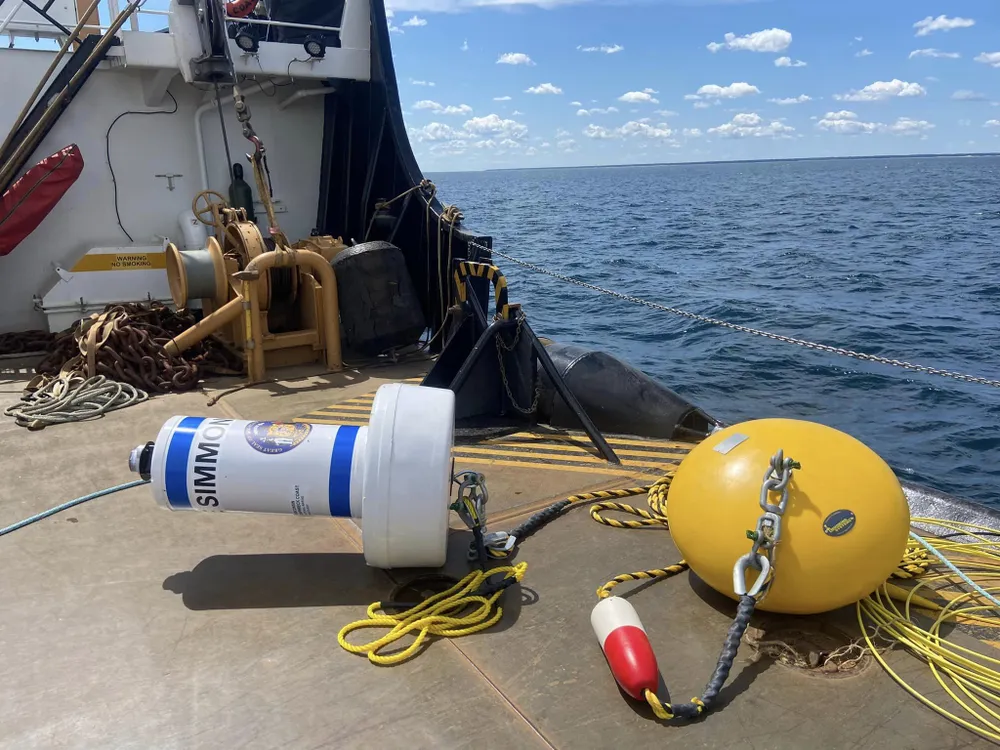Divers Can Now Explore Historic Shipwrecks in Lake Michigan More Easily
Crews installed buoys and mooring lines to mark the locations of 19 wreck sites in the Wisconsin Shipwreck Coast National Marine Sanctuary

Dozens of historic shipwrecks are submerged in Lake Michigan within the bounds of the Wisconsin Shipwreck Coast National Marine Sanctuary. For interested divers and snorkelers, exploring some of these wreck sites just got easier.
This month, crews installed buoys and mooring lines near 19 of the most popular shipwrecks at the protected site. The buoys mark the locations of the wrecks, allowing scuba divers to find them faster, reports the Milwaukee Journal Sentinel’s Caitlin Looby.
The buoys also help protect the wrecks from damage caused by anchors, since they give boaters a place to tie up while divers head down to explore, reports the Ozaukee Press’ Kristyn Halbig Ziehm.
“It’s an important thing to do,” Bill Moren, a member of the shipwreck advisory council, tells the Ozaukee Press. “It’s one little step to make the sanctuary more of a treasure and ensure the shipwrecks are preserved.”
The installation process began several weeks ago. On August 14, the sanctuary announced that crews had placed buoys at the last of the 19 sites.
The wrecks now marked with buoys are located between 50 and 300 feet below the surface. Four buoys were installed near shipwrecks situated in shallower waters, which makes them more accessible to kayakers and snorkelers. (Those who aren’t interested in diving can explore several of the wrecks virtually via 3D models.)
Latitude and longitude coordinates, as well as a map of all the buoys, are available on the sanctuary’s website. Most of the wrecks have surface buoys, but a few have subsurface buoys submerged at depths of 40 feet.
Thunder Bay National Marine Sanctuary, located in nearby Lake Huron, has similar buoys positioned near some of its 100 known shipwrecks.
Designated in 2021, the Wisconsin Shipwreck Coast National Marine Sanctuary is one of the newest marine sanctuaries in the country. (In June, the Biden administration created the Lake Ontario National Marine Sanctuary in New York, bringing the total number to 16.)
The Wisconsin sanctuary encompasses 962 square miles of Lake Michigan and touches the counties of Kewaunee, Manitowoc, Sheboygan and Ozaukee. The state of Wisconsin co-manages the site with the National Oceanic and Atmospheric Administration (NOAA).
The sanctuary protects 36 known shipwrecks that sank between 1830 and 1930. But an estimated 60 additional shipwrecks may also be hiding at the bottom of the lake within its boundaries—and researchers are actively searching for them.
Scientists have also mapped the lakebed of the entire sanctuary, and they’re holding educational outreach events with local teachers and students.
Within the Great Lakes more broadly, an estimated 6,000 shipwrecks are resting at the bottom of Lake Michigan, Superior, Erie, Huron and Ontario. Historians and underwater archaeologists continue to search for and identify previously undiscovered wrecks.
Just last month, researchers announced that they had located the Margaret A. Muir, a 130-foot schooner that sank in Lake Michigan in September 1893 with the captain’s dog onboard.

